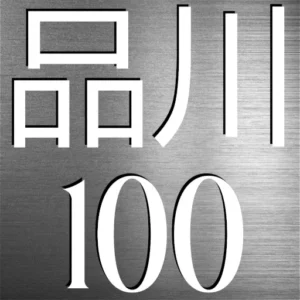What is Seiseki-koen?
Seiseki-koen is a small park. However, it is on a historically significant site. That is, the grounds the former Honjin of the Shinagawa-shuku – the first post station of the Tōkaidō during the Edo period.
Honjin and Seiseki-koen
The Honjin was a type of inn used by daimyo (feudal lords) and imperial messengers for rest and lodging. In the early Edo period, there were Honjins in both North and South Shinagawa. Later, from the middle period onwards, only the North Shinagawa Honjin at this site remained. The current Honjin site was established in 1771 and is located almost in the center of the three Shinagawa-juku.
Why is it called Seiseki-koen?
It served as a temporary palace for Emperor Meiji during his eastern journey to Edo in 1868. Therefore, the park name is “Seiseki Kōen” (聖蹟) which means Sacred Shrine Park.
Seiseki-koen Plaques
There are some plaques giving details of the Honjin at the entrance to the park from the Tokaido. Here are the signs and translations into English.

The main building, Honjin, used by VIPs valued formality had a front gate, an entrance, and a ceremonial stand (a wooden booth in front of the entrance). Ordinary innkeepers were not allowed to use this architectural style.
Picture 1. Shinagawa-juku Honjin restoration model. This is a restored version of the main shrine rebuilt after being destroyed by fire in 1811 (Bunka 8).
Picture 2. Plan view of the Honjin
As featured at the Shinagawa Historical Museum

The Shinagawa-juku Honjin served as the residence of Emperor Meiji three times in total. October 12, 1868 (Meiji 1st year): Emperor Meiji stayed overnight at the Shinagawa Shuku Honjin during his first journey to the east (Tōkō). December 8, 1868: The Emperor rested at the Honjin during his return journey to Kyoto (Kyoto Gankō). March 27, 1869: He stayed overnight again at the Honjin during his second journey to the east.
Picture: “The emperor and his entourage heading for Shinagawa-dori in the capital” (attributed to Utagawa Yoshimori) Shinagawa History Museum Collection
This work depicts the solemn scene of the Emperor and his entourage approaching Takanawa Okido from Shinagawa-juku the morning after their stay at the Honjin.
History of the Seiseki-koen Site
After the abolition of the station system in 1872, the site became the Shinagawa Hospital of the Metropolitan Police Department. It became a park in 1938 .
Inside the park, there are several monuments, including the “Seiseki Kōen Origin Monument”, “Saint Virtue Monument”, “Sacred Trace Monument”, and a bust of Tetsutaro Ishii, a former mayor of Tokyo. At the entrance of the park, there is a pine tree from another post town, Tsuchiyama-shuku.
The park is a significant historical site as it provides a glimpse into the past, particularly the Edo period, and the role of Shinagawa-shuku as a key post station along the Tōkaidō.
Here is a tile displaying a plan of the old Honjin overlayed over the Seiseki Kōen site.

Where is it?
| what3words | ///richest.sage.slamming |
| latitude longitude | 35.6188783 139.7439492 |
| Nearest station(s) | Shimbaba, Kitashinagawa |
| Nearest public conveniences | East corner of the park near the crossroads. |
Show me a sign.

Lucky to find it hidden behind bicycles. Hence the shadow.
Withervee says…
You don’t get a feel for the history of the site. At first glance it seems like a small recreation ground with a few monuments. Pics and explanation of those later.
Looks like a well maintained pair of WCs.

Further info
A model of the Honjin is on display at the Shinagawa Historical Museum.

